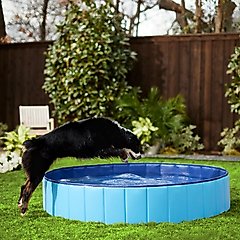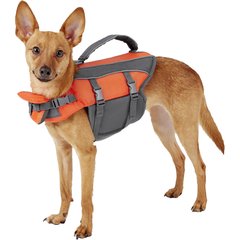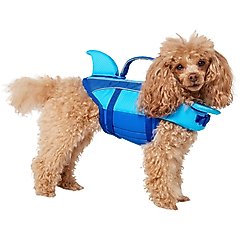Can All Dogs Swim?
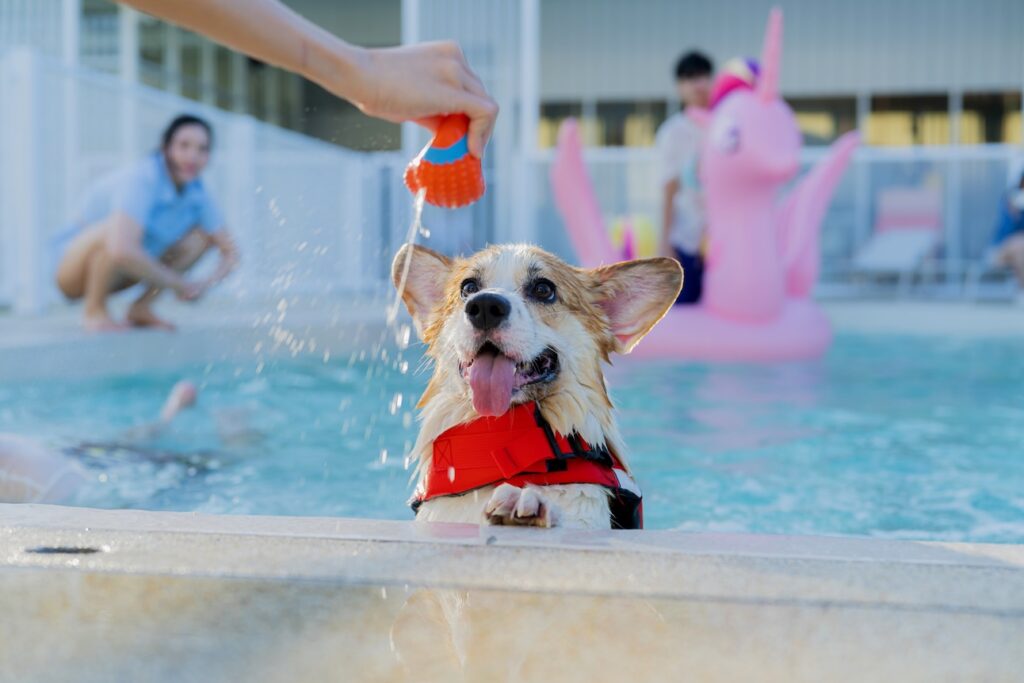
Photo by travelism/E+ via Getty Images
Splashing around in the pool is a summer rite of passage, and if you have an adorable doggo, you might be wondering if your pup can join you in the deep end.
But can all dogs swim? Is it something they just instinctively know how to do?
Key Takeaways
- Not all dogs are natural swimmers; breed, health, and exposure to water all influence a pup’s ability to swim.
- Sporting breeds like Golden Retrievers, Labradors, and Boykin Spaniels often swim well.
- Stocky dogs and those with flat faces, like Bulldogs and Boxers, tend to struggle with swimming.
- Always supervise your dog around water and have them wear a life jacket, no matter their breed or health.
- Never assume your dog can swim.
Do All Dogs Know How To Swim?
No, not all dogs inherently know how to swim.
Even though many dogs instinctively paddle in the water, that doesn’t automatically mean they’re great swimmers—or even that it’s safe for them to be in the water, says Sarah Cortright, DVM, veterinarian and chief medical director for the Underdog Community Project in Orange County, California.
She adds that a number of factors influence a dog’s ability to thrive in water, including:
- Whether they’re a sporting breed developed for watery conditions (dubbed “water dogs”)
- Their overall physical health
- Their body structure
- Whether they’ve had early exposure to and socialization in water settings
“Dogs introduced to water gradually and positively when young are often more confident swimmers, and their physical health and conditioning matters, too,” Dr. Cortright says. “Obesity, arthritis, or underlying medical issues can make swimming more difficult or even dangerous.”
Dogs That Swim Well
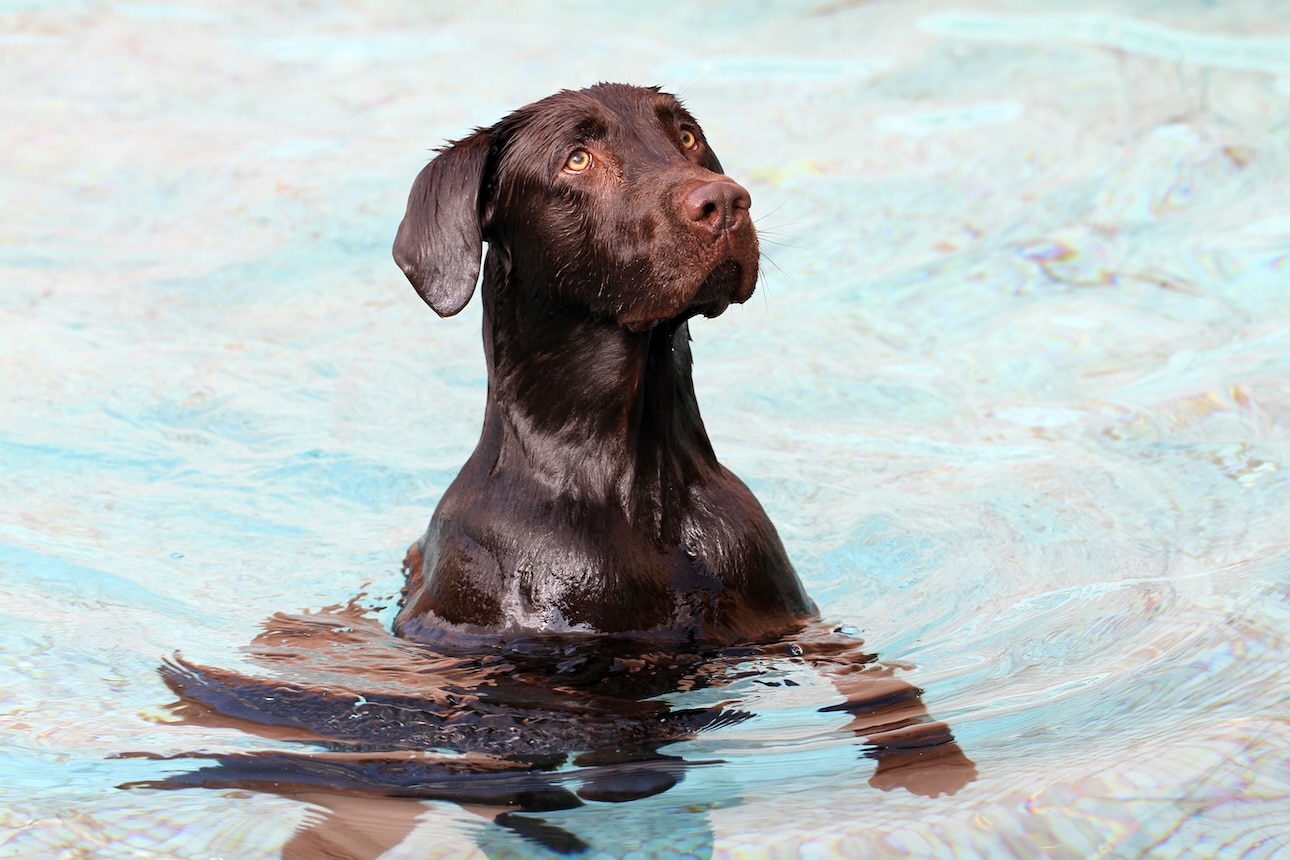
Photo by Arturo Peña Romano Medina/E+ via Getty Images
Many dogs in the American Kennel Club’s (AKC) sporting group do great in the water, says certified dog trainer Dee Hoult, CDBC, CPDT.
“This is because they were selectively and thoroughly bred for their abilities to hunt, retrieve, and thrive in outdoor activities,” she explains. “Breeds in the sporting group are energetic, intelligent, have strong instincts, are confident, and naturally water-loving.”
These breeds include:
Dog Breeds That Might Struggle With Swimming
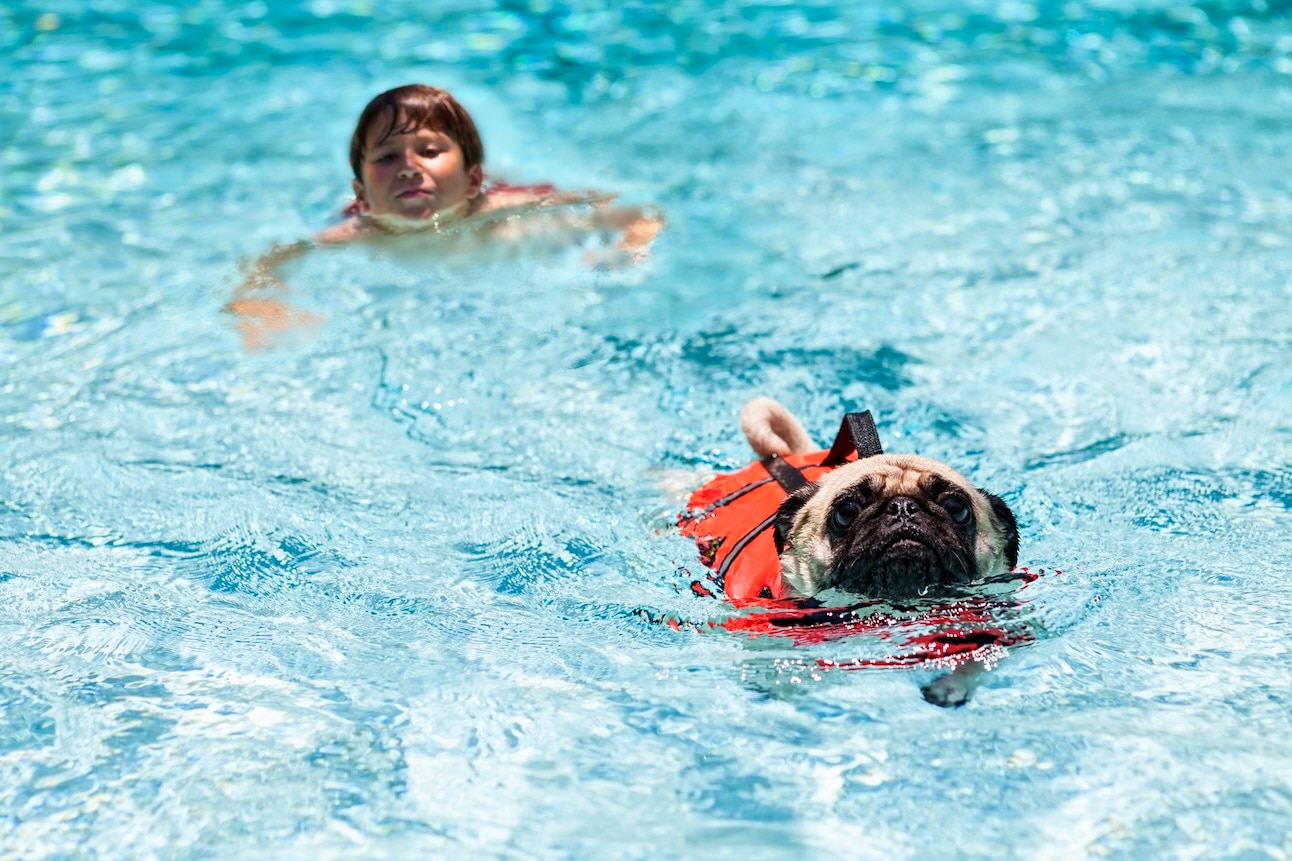
Photo by TerryJ/E+ via Getty Images
While some dog breeds enjoy splashing around in the water, others aren’t as naturally graceful. Further, older dogs or those with health issues may not fare well in water.
“[In contrast] to sporting breeds, dogs that were bred purely as companions may struggle with swimming,” Hoult says. “Some because they have no genetic desire to be in the water, while others are physically too heavy, short, or stocky to be graceful in the water.”
For example, French Bulldogs and other bulky, short, and heavy bully breeds are generally not good swimmers because of their broad chest and short legs. Hoult says their structure makes it nearly impossible to maintain buoyancy, and they often sink quickly when not provided with a life jacket.
Also, dogs with flat faces (brachycephalic) aren’t ideal swimmers. Their short snout makes it harder to keep their nose above water, which means there’s a higher risk of inhaling water and developing aspiration pneumonia. Plus, many of these breeds have lower stamina and compromised airways that can make even brief swims dangerous.
Dogs that don’t do well in water include:
3 Swimming Safety Tips for Dogs
If your pup is naturally inclined to swim, then splashing around in the pool or at the lake can be a fun adventure and bonding experience. That said, there are some water safety tips to keep in mind before diving in (literally)!
1. Go Slow and Be Patient
One of the worst things pet parents do, often mistakenly, is take their dog or puppy into deep water as a first experience and hope for the best.
“Suddenly your dog is panicked and is sure to develop a negative association with water,” Hoult says. “The best thing to do when teaching a dog how to swim is to introduce them to a small kiddie pool where they can learn to enjoy playing in shallow water without the fear of drowning.”
Recommended Product
Little by little, you can go deeper and deeper, always allowing your dog to find the exit to solid ground.
2. Always Wear a Life Jacket
Life jackets are important for all dogs to wear no matter their breed, age, or health.
“Even strong swimmers benefit from the added buoyancy and visibility,” Dr. Cortright says. “Always ensure proper fit. Dog life vests should be snug but not restrictive, with secure fastenings and handles to assist in lifting your dog out of the water if needed.”
Recommended Products
3. Stay Nearby
Along with introducing your pup to water slowly and fitting them with a life jacket, keep close to your pup and monitor how they’re doing.
“Always supervise your dog around water; even strong swimmers can tire, panic, or get into trouble,” Dr. Cortright says. “Also watch for signs of fatigue. Swimming is hard work, and many dogs may not realize they’re getting tired until it’s too late.”
If you follow these tips, you can help ensure your pup’s time in the water is safe, enjoyable, and stress-free for both of you.
